
|
|
Für die deutsche Fassung bitte nach unten scrollen
|
|
Visit Us at Our Exhibition
"Egypt's Eternal Beauty"
|
|
|
SAVE THE DATE. Last but not least another good news: In summer, for the first time in a year, an important art fair will take place again in Austria. ART&ANTIQUE in the Salzburg Residenz will open its doors again on 7 August. We are already looking forward to meeting you again at the Salzburger Festspiele.
|
|
|
|
Our Highlight of the Month:
|
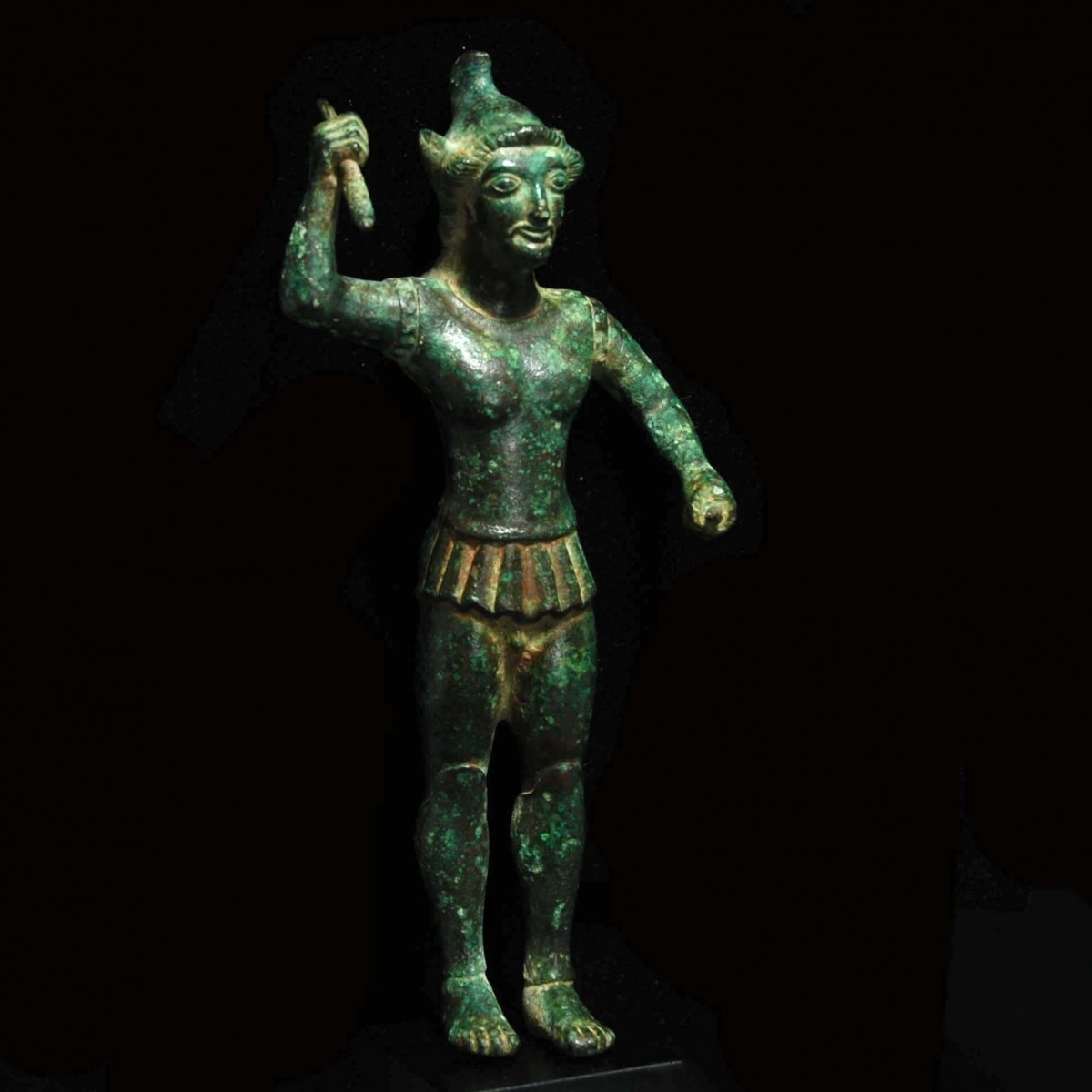
|
|
|
|
|
|
|
|
Etruria – 5th century B.C.
|
Magnificent solid bronze statuette of an Etruscan warrior. He stands on his left leg, which is slightly put forward, and holds his right arm raised, in the hand a short lance. The left arm is slightly set off from the body, holding the remains of another weapon, possibly a shield. The warrior wears a Phrygian helmet with raised cheek guards. The thick hair frames his face and cascades long and finely into his nape. The face with large, almond-shaped eyes, long nose and a gentle smile. Above his mouth a finely drawn moustache. He wears a short tunic with hemmed seams on the shoulder, on top a cuirass. The chiton falls in fine pleats in the front, but the genital as well as the buttocks are visible. The lower hips are supported by greaves. Under the feet the tenons are still preserved which served for mounting on the ancient base. See for a similar statuette with Christie’s New York on 10 June 2010, lot 124.
|
Provenance: English private collection from the 1980s.
Dimensions: 17.8 cm high (including tenons)
Price: 24 000 Euro
|
|
|
|
Selected Artworks of the Month:
|
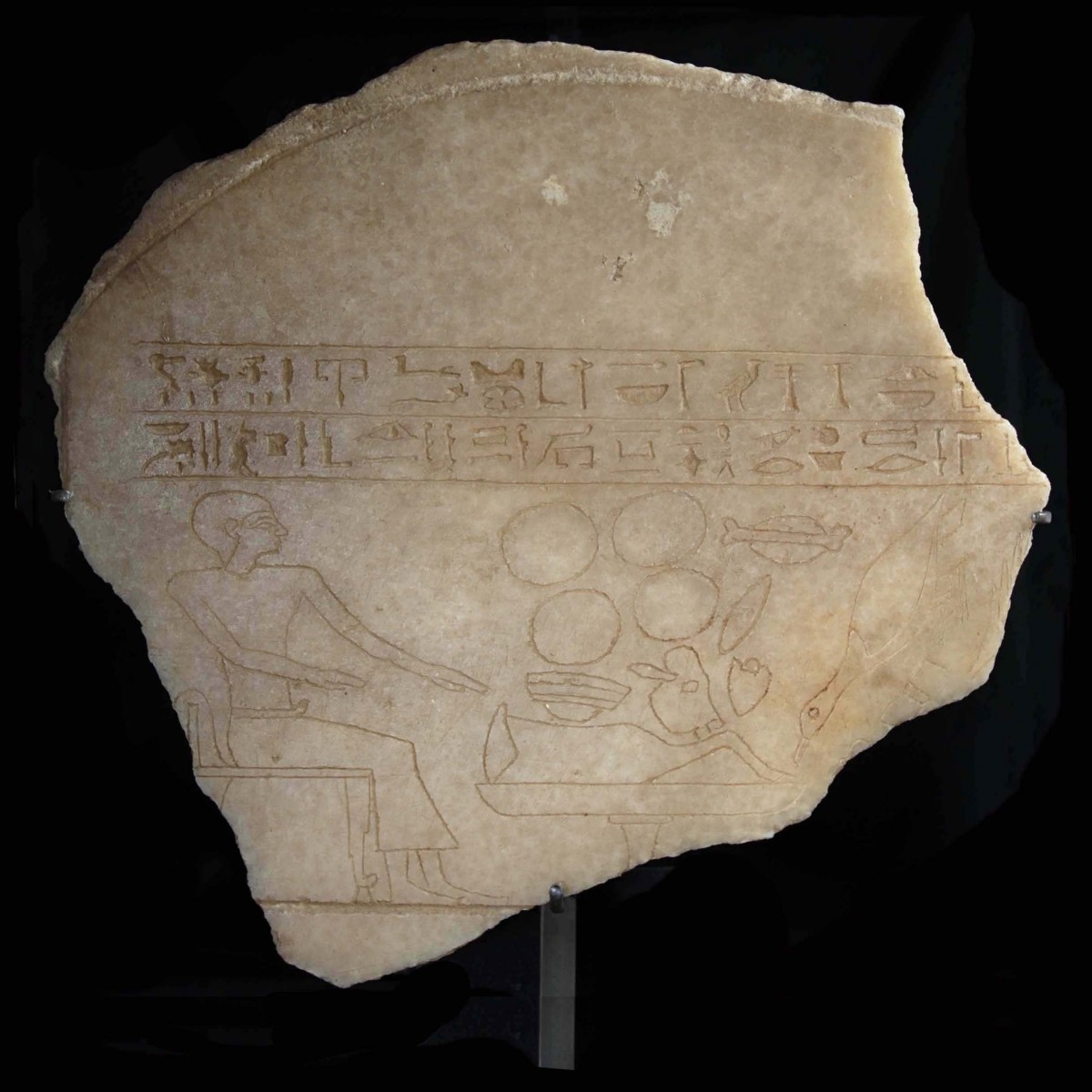
|
|
|
|
Egypt – Middle Kingdom, 12th dynasty, 1991-1802 B.C.
|
Fragment of an alabaster stele from the temple of Osiris in Abydos. The engraved relief depicts on top two diligently worked out hieroglyph lines. They mention the offering formula and the owner's name, "Lord of the house Ameny". In the offering formula "Osiris, the great God, the Lord from Abydos" is asked to present on behalf of the donor of the stele an "offering" of "bread and beer, meat and poultry, linen and alabaster and all good and pure things of which a god can live with, for the Ka of Ameny". To overcome death through Osiris the believers wanted to be buried the same way Osiris was buried in Abydos. Since the end of the Old Kingdom life and death of Osiris, but especially his resurrection provided hope for believers to overcome death. Therefore private people tried in increasing numbers to immediately be part in the meaning of Abydos and the holiness of the place. They were buried in the necropolis or erected cenotaphs, small chapels, where steles could be placed for the whole family. In the present stele the "Lord of the house" Ameny is depicted on a stool with lion feet and short backrest. He holds his arms with the flat hand away from his body. In front of him is the dining table with round and long loafs of bread, goose and beef ham. Mounted.
|
Provenance: Belgian private collection Tom Desmet, acquired on 26 June 1967 from Dumoulins et Meulemans in Brussels, Belgium. Thence with Galerie Moderne Brussels on 13 May 2015. With a provenance confirmation paper by Galerie Moderne of 4 December 2020. Last in an English collection.
Dimensions: 30,5 cm x 31 cm
Price: 18 000 Euro
|
|
|
|
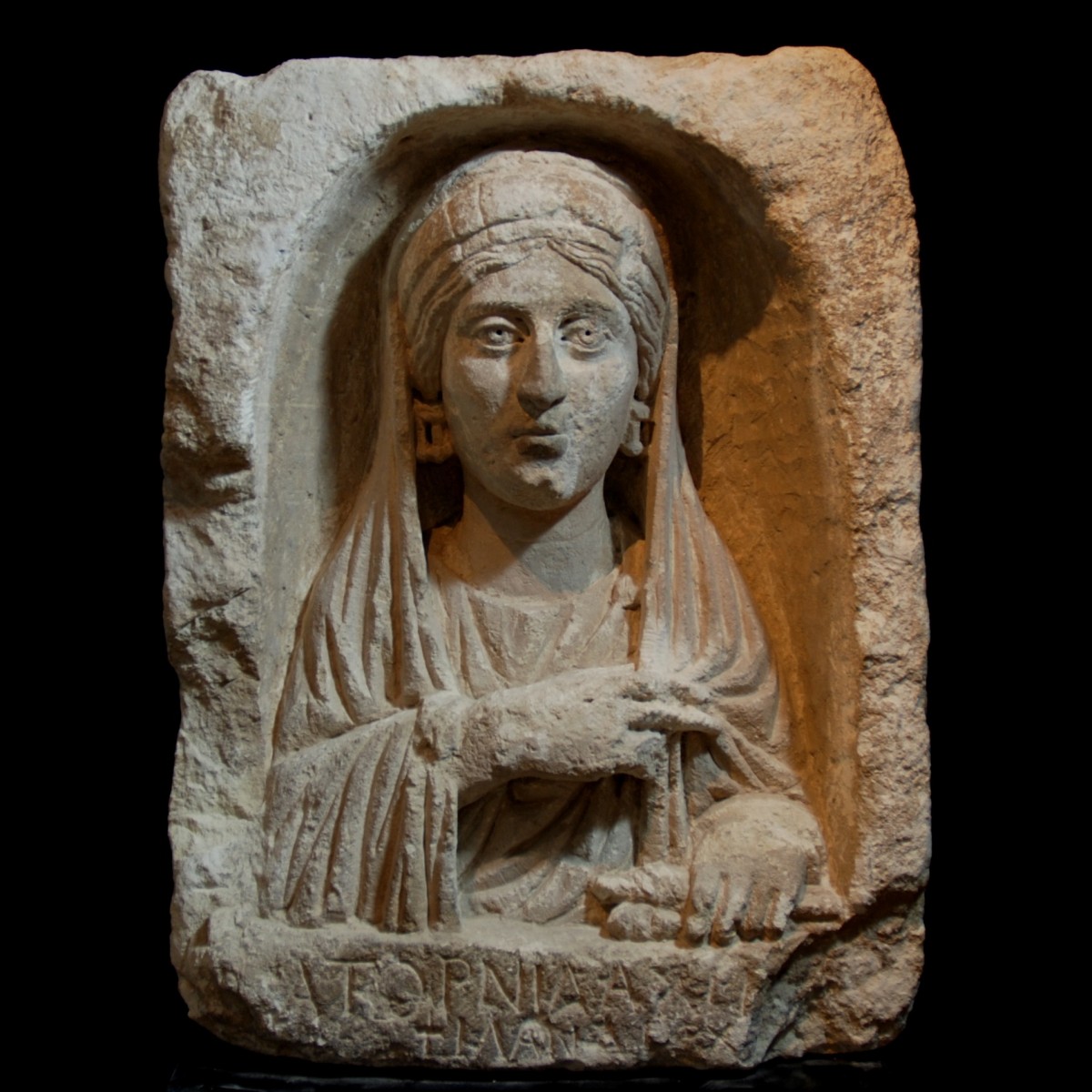
|
|
|
|
Roman Empire – 2nd century A.D.
|
Large limestone stele with a sculptural bust of a woman in the carved niche. The woman, whose name is indicated at the lower bottom with Saturnilla, looks at the viewer with wide open eyes under thick lids. The pupils are perforated. She is holding possibly scrolls in her left hand, while pulling her veil together with her right. The hair is carefully curled and parted in the middle. Saturnilla wears striking earrings and a robe that is tied on the left shoulder. The depiction of the deceased and the soft limestone make it clear that the stele originates from northern Syria, possibly from Zeugma in what is today eastern Turkey. With translation and description by the Viennese epigraphist Katharina Michner BA MA.
|
Provenance: Private collection Jany Gabriel Parise, acquired prior to 1984. With an expertise by Jean Roudillon of 16 April 1984. Accompanied by a French antiquities passport.
Dimensions: 62.5 cm x 46 cm
Price: 18 000 Euro
|
|
|
|
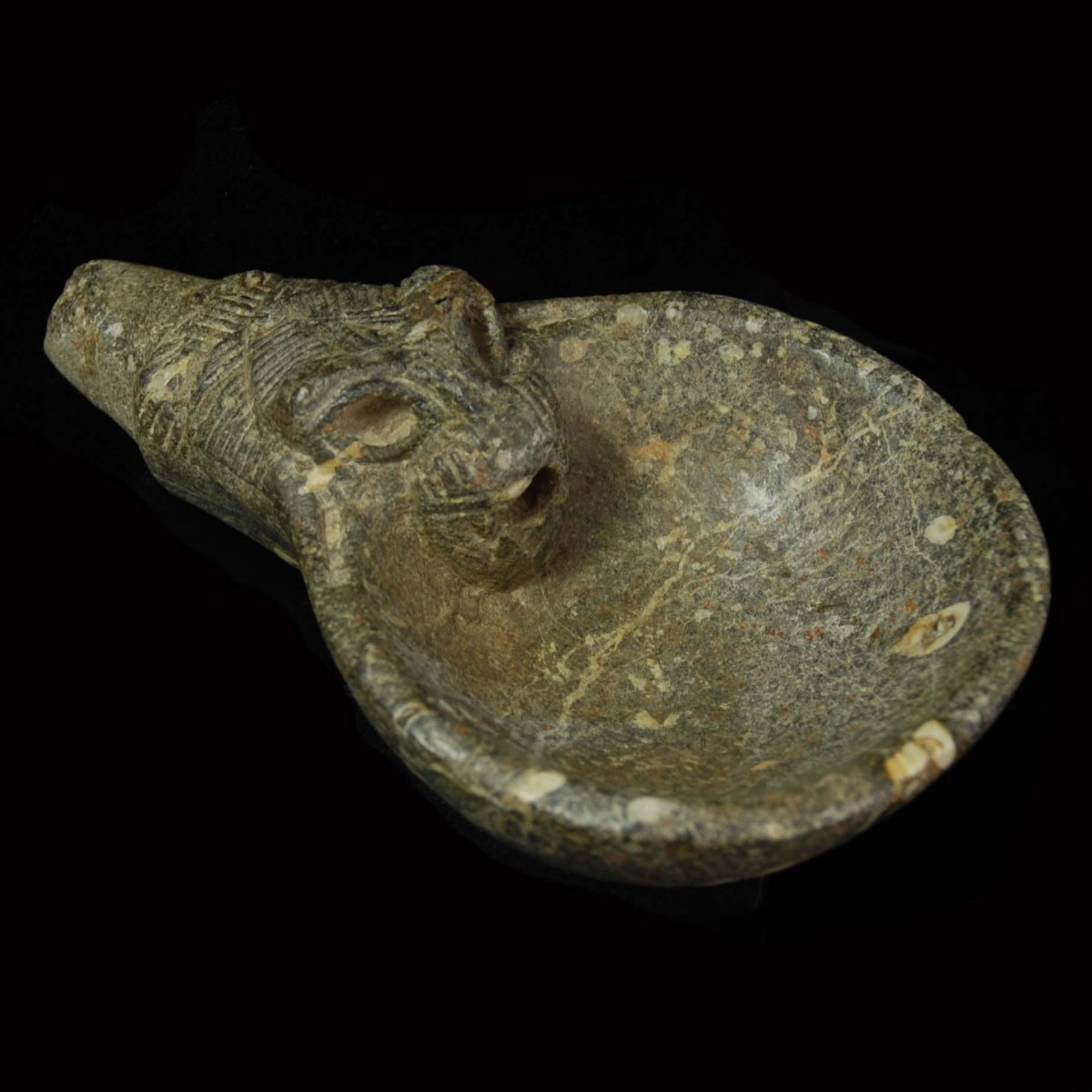
|
|
|
|
|
|
Assyrian Empire – 8th century B.C.
|
Steatite libation bowl with a lion head on the rim. The lion head with a round opening in the mouth, where the libation ran into the bowl. The animal’s eyes are deeply pierced and once had inlays of a gemstone. The lion’s fur finely cut into the stone in several layers, also around the mouth fur engravings. The lion’s body turns at the back into a narrowing opening which was once connected to a large vessel. The libation was extracted from there and collected in the lion cup. The bottom of the bowl with two concentric circles. Libation cups such as the present one were made in the Neo-Assyrian great empire, especially in northern Syria. See for the type Muscarella (Editor) “Ladders to Heaven, Art Treasures from Lands of the Bible”, number 235. Mounted.
|
Provenance: From an English private collection. Thence Bonhams London 7 October 1997, lot 258. Last in a New York collection.
Dimensions: 17.5 cm long
Price: 8 000 Euro
|
|
|
|
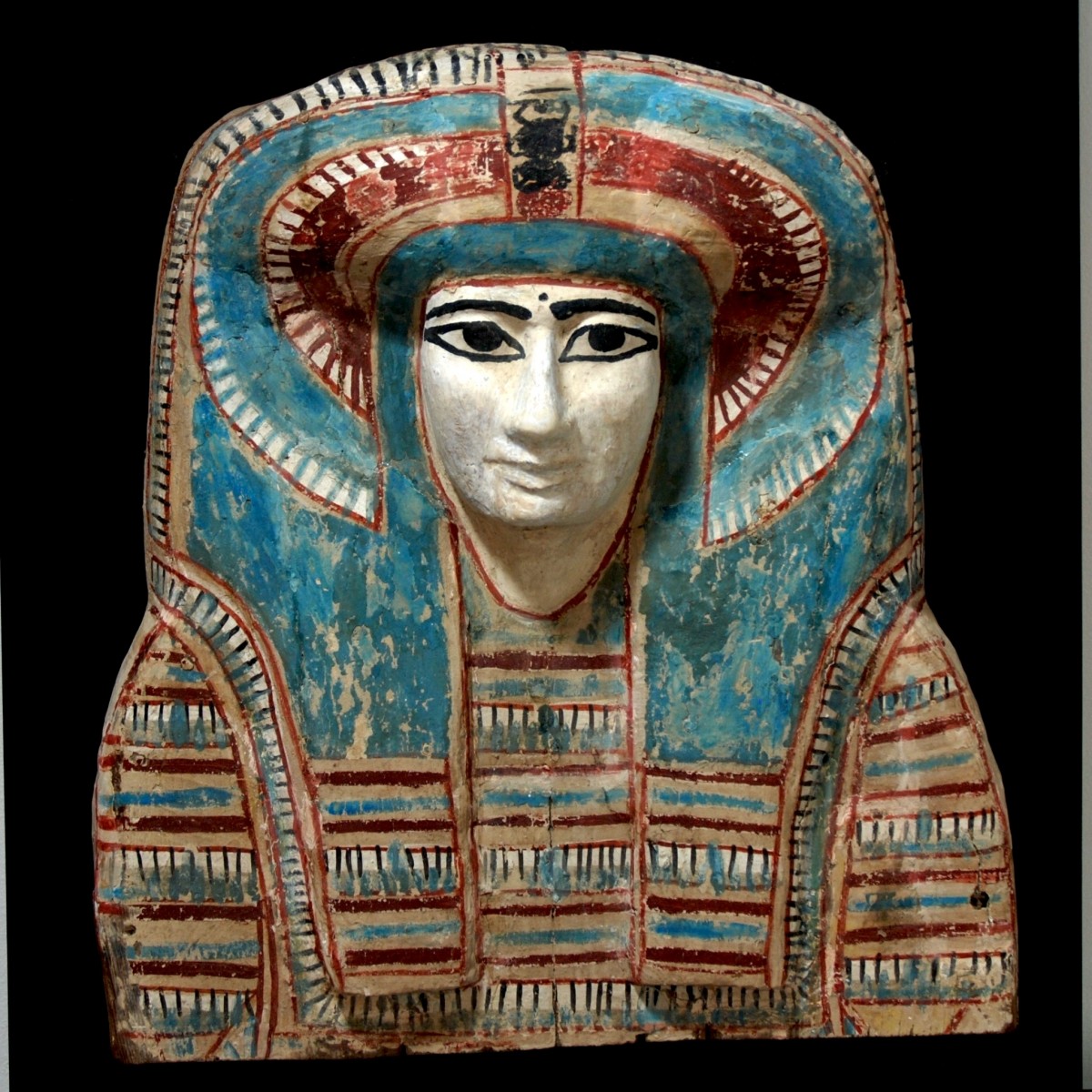
|
|
|
|
Egypt – Late Period, 664-332 B.C.
|
Large wood sarcophagus mask with abundant paint. The relatively small and possibly female face with white grounding, black drawn lids and large black pupils. The brows above also in black color. Mouth and nose vividly depicted. The large tripartite wig is decorated in blue, red and white. The shoulders, front lobes and the collar are decorated with blue, red, yellow and white bands with vertical black lines. On the forehead a black painted scarab holding a red sun disc. Mounted on a black wood panel for suspension on the wall.
|
Provenance: Private collection D., Paris, France. Acquired from the parents of the current owner in the 1980s.
Dimensions: 56 cm x 50 cm
Price: 12 000 Euro
|
|
|
|
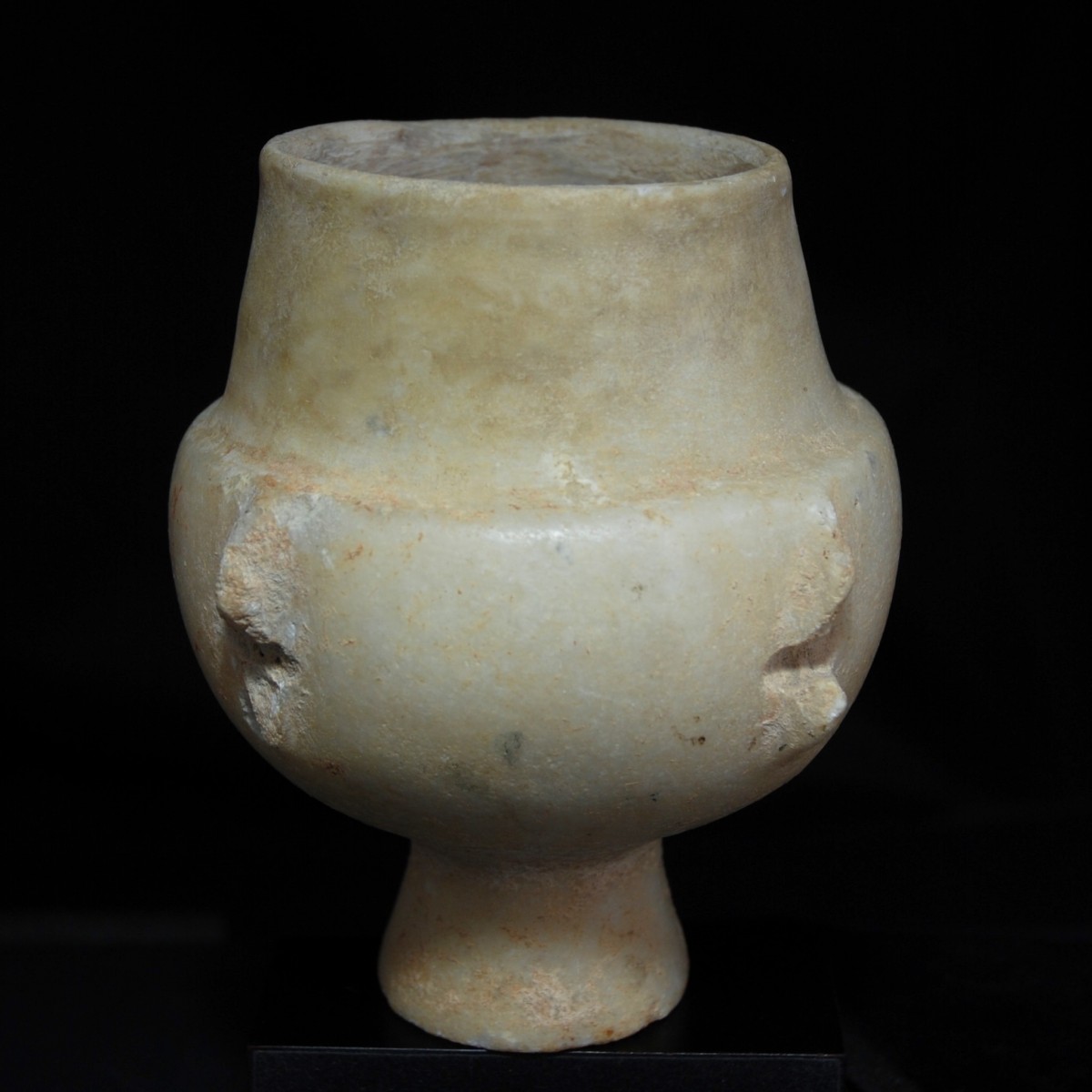
|
|
|
|
|
|
Cycladic Islands – Early Cycladic I, 3000-2900 B.C.
|
Large marble stone vase from the early period of the Cycladic culture with a hemispherical corpus and four pierced lug handles. The rounded corpus thin-walled and translucent, the neck cylindrical. The heavy vessel stands on a slender high foot. In the early Bronze Age, inhabitants of the Cyclades processed the white marble of their islands into the famous idols and these stone vessels whose form has remained unique. The exact function of a “Kandila” (for their similarity they are named after the hanging lamps in Greek churches) is a mystery until today . Fact is that their production was very labour-intense. The marble block was not hollowed with metal tools, but with stones, bones and wood tools.
|
Provenance: From the inventory of the judicially dissolved Parisian gallery La Reine Margot. Listed there with the inventory number 9694.
Dimensions: 16.6 cm high
Price: 8 000 Euro
|
|
|
|
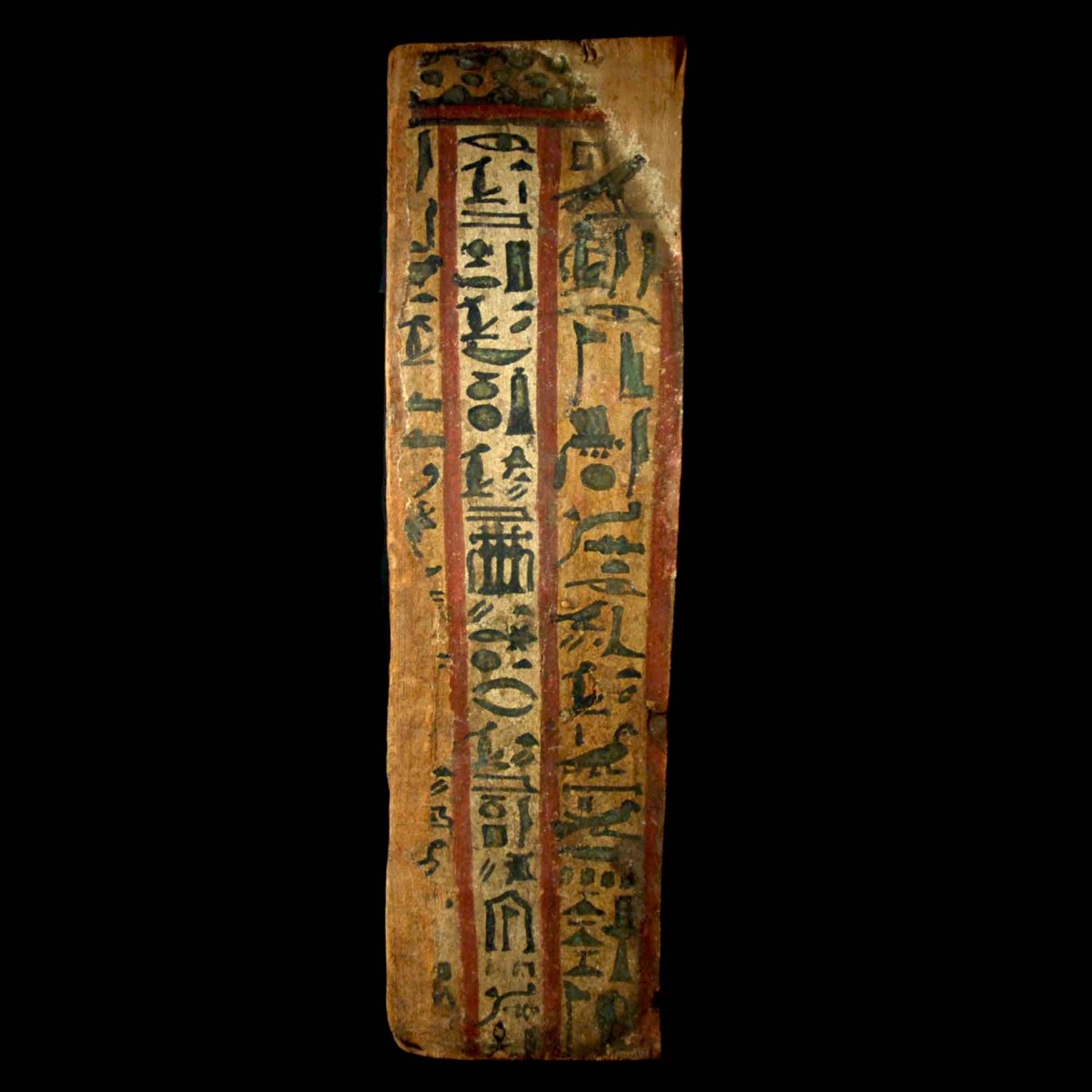
|
|
|
|
Egypt – Late period, 664-332 B.C.
|
Wood panel originating from the sarcophagus of a woman called Neset-iret-bint. The vertical hieroglyph inscription in three columns is to be read from top right to the bottom. The translation reads:"O Osiris, the blissful (the deceased), Neset-iret-bint, daughter of Wer-diu, head of the seats, priest of Thoth..." The text remains in the third row refer to the so-called "deification of the limbs". Hereby body parts are associated with deities. With wonderfully preserved red and white color remains. The fragment probably originates from Hermopolis or Tuna el-Gebel because the father of the deceased is mentioned as priest of Thoth. Mounted on a black varnished wood plate for wall hanging.
|
Provenance: Private collection D., Paris. Acquired by the parents of the current owner in the 1980s.
Dimensions: 62.2 cm x 17.6 cm
Price: 8 000 Euro
|
|
|
|
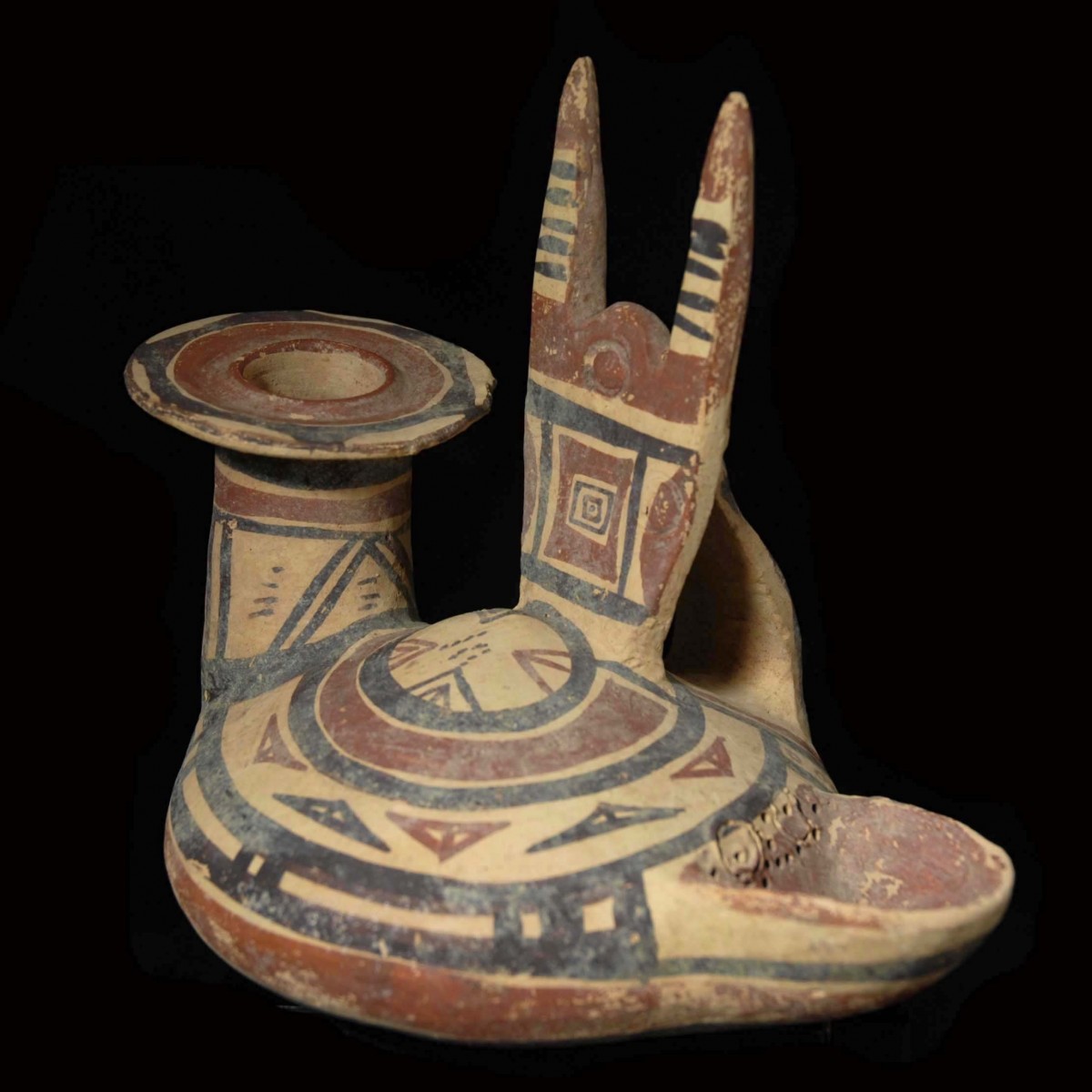
|
|
|
|
|
|
South Italy – 5th century B.C.
|
Wonderfully preserved askos in the form of a stylized bird. The spout in the front symbolizing the head is raised high with a horizontal, slightly bent rim. At the back there is a round, basin-shaped opening that represents the tail. Small holes in the body sift the liquid and ensure that it only drips slowly into the basin. The handle in the form of a stylized bull head and a central eye. The geometric painting in red and black with triangles, bands, circles and dots decorate the entire vessel and is mostly preserved.
|
Provenance: Edward H. Merrin Gallery, New York 1970s. From there acquired by a New York private collection.
Dimensions: 16.2 cm x 17.4 cm
Price: 2 200 Euro
|
|
|
|

|
|
|
|
Middle Europe – 13th century B.C.
|
A pair of arm spirals made of square bronze wire. One end of the wire ends in a protruding hoop with a pointy end, the other ends in a large, finely curled spiral with six coils and a central button. This so-called tutulus is worked out separately and fixed in the spiral with a cross brace. Bronze jewellery like the present one was worn on the upper arm and also served as a protection.
|
Provenance: Private collection Dr. Rudolf Leopold (1925-2010), Vienna, Austria. Thence in the estate of the family.
Dimensions: 14 cm and 15.7 cm high respectively.
Price: 1 400 Euro
|
|
|
|
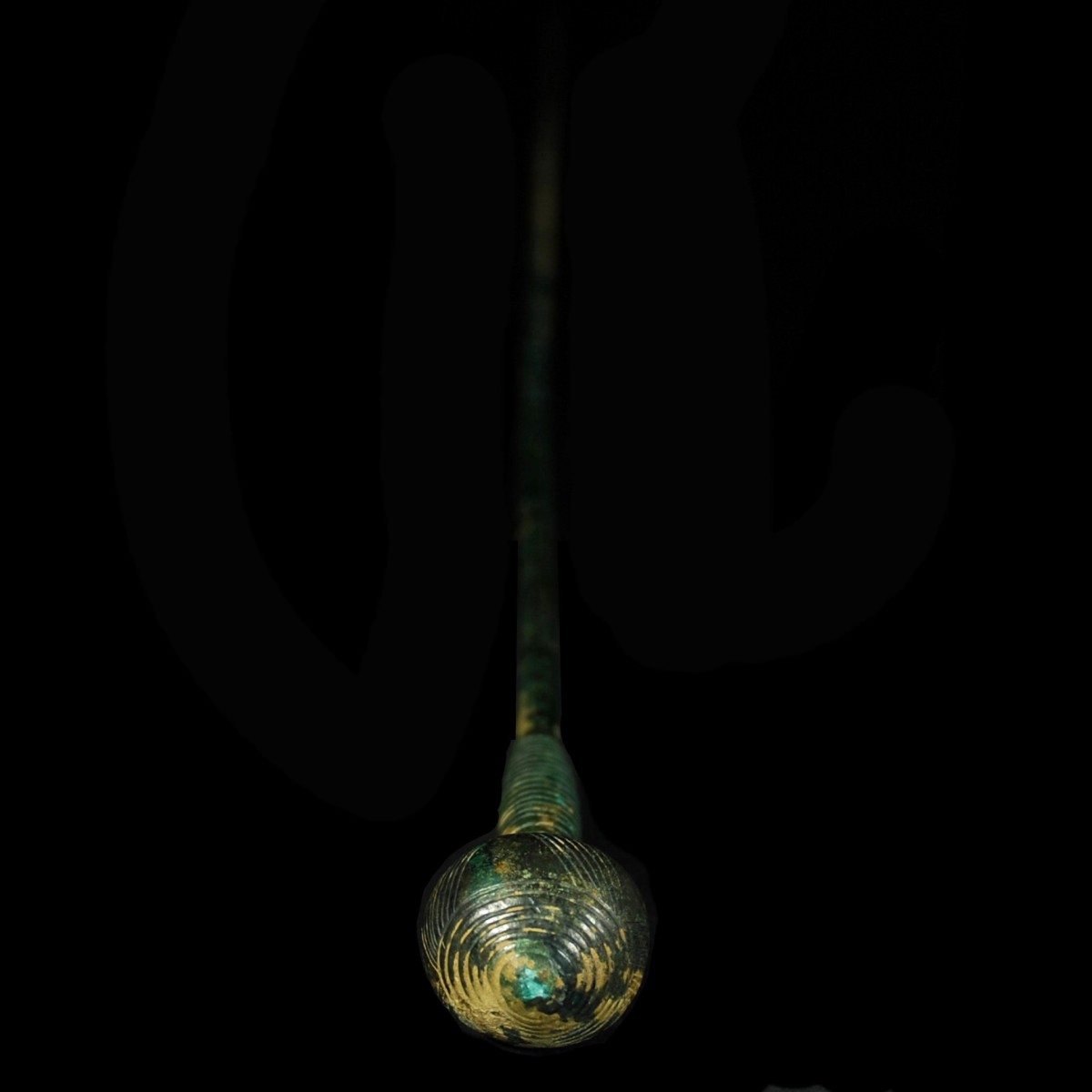
|
|
|
|
|
|
Middle Europe – around 1300 B.C.
|
Exceptionally long pin of cast bronze which are typical for finds from the Urnfield period. The needle with a long, straight shaft, as well as swollen neck with horizontal grooved bands. The head onion-shaped, above and below encircling, between diagonale grooves.
|
Provenance: German private collection, acquired in the 1970s to the 1980s.
Dimensions: 60 cm long
Price: 900 Euro
|
|
|
|
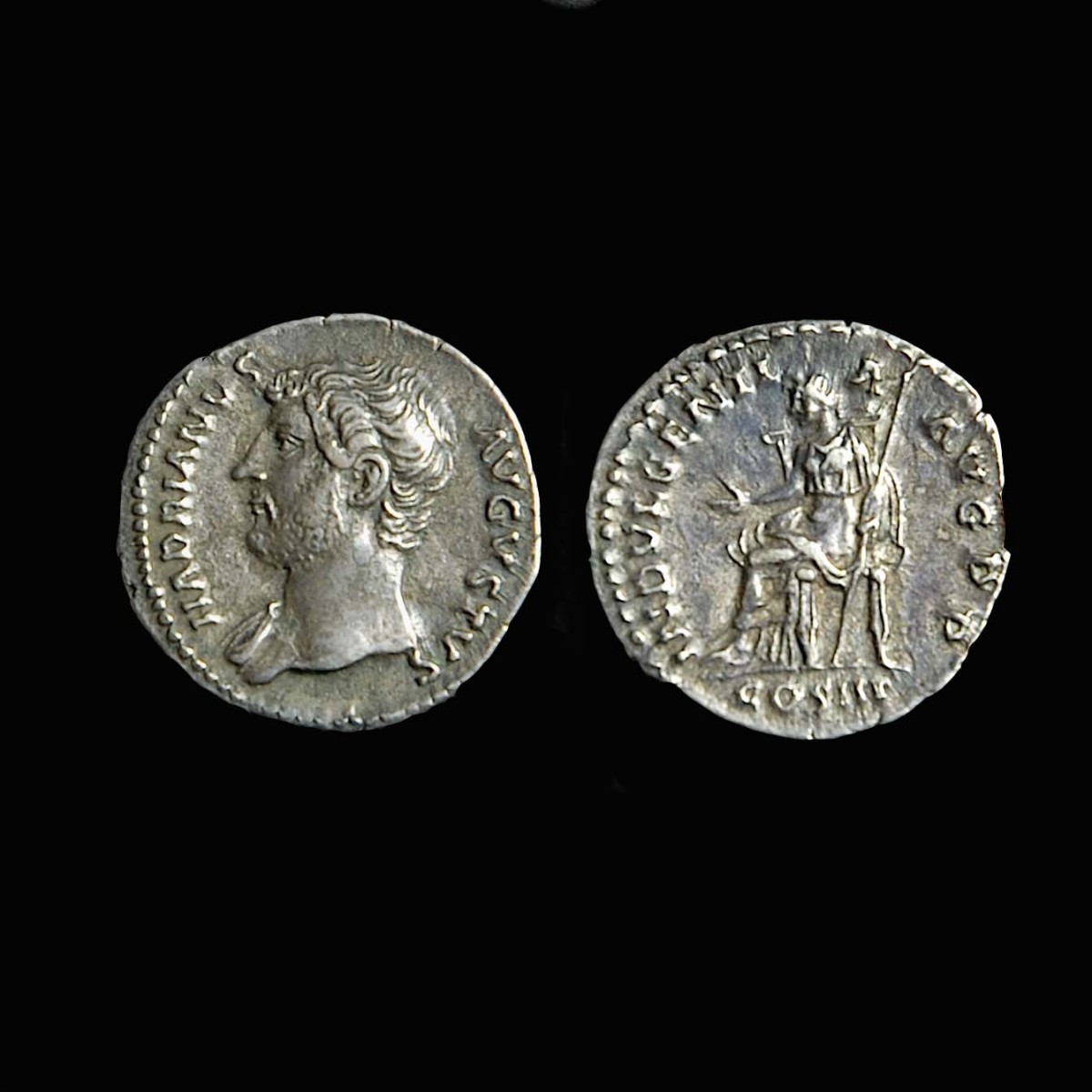
|
|
Roman Empire – 132-134 A.D.
|
Silver denarius of Emperor Hadrian with a rare depiction of his portrait to the left on the obverse and text Hadrianus Augustus. On the reverse the seated Indulgentia also to the left, her right hand stretched out, in her left hand holding her sceptre. An encircling text “INDULGENTIA AUG PP COS III”. Magnificent portrait of the emperor in high relief.
|
Provenance: Collection Schwarz, Graz, Austria.
Dimensions: 1.8 cm in diameter; 3.5 gram
Price: 700 Euro
|
|
|
|
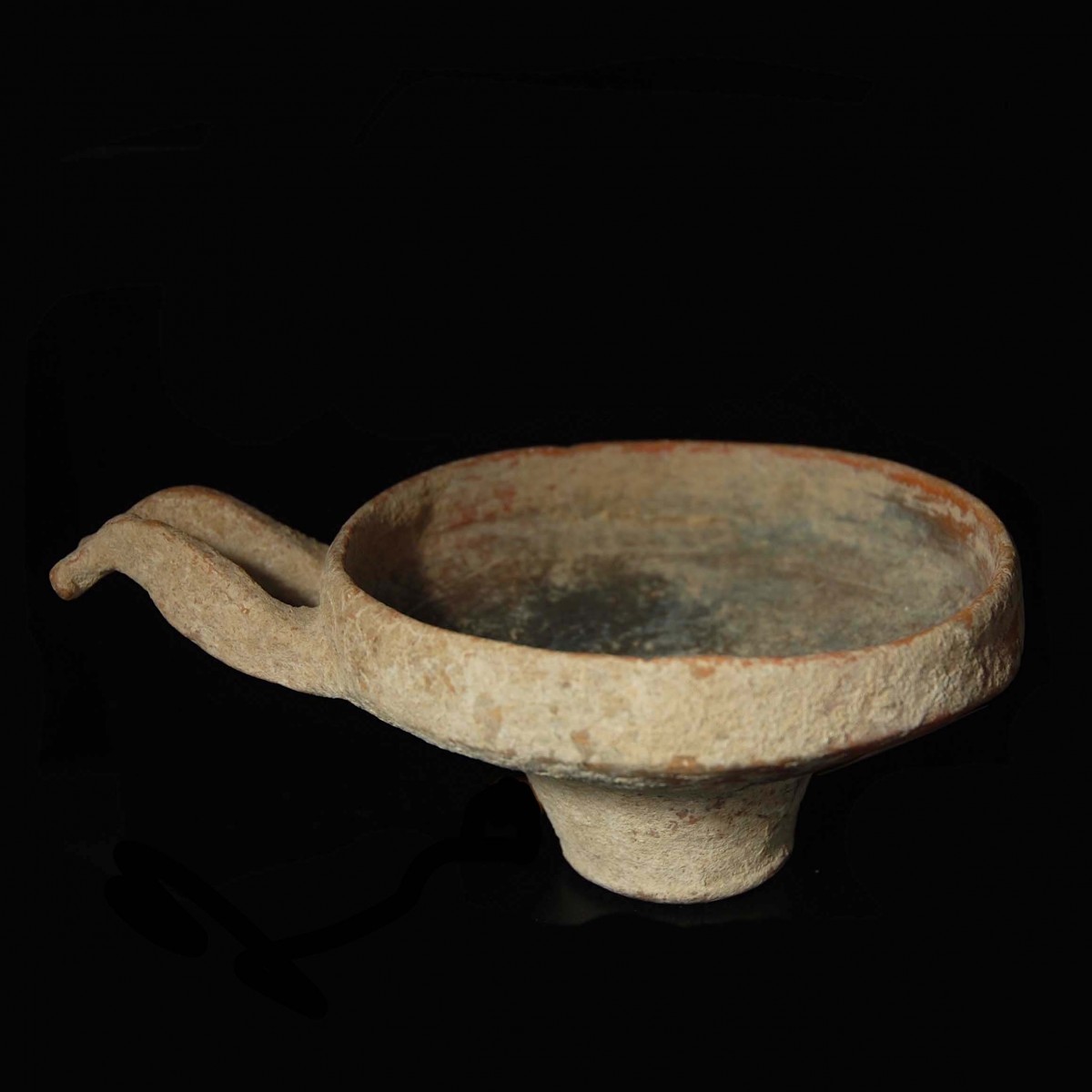
|
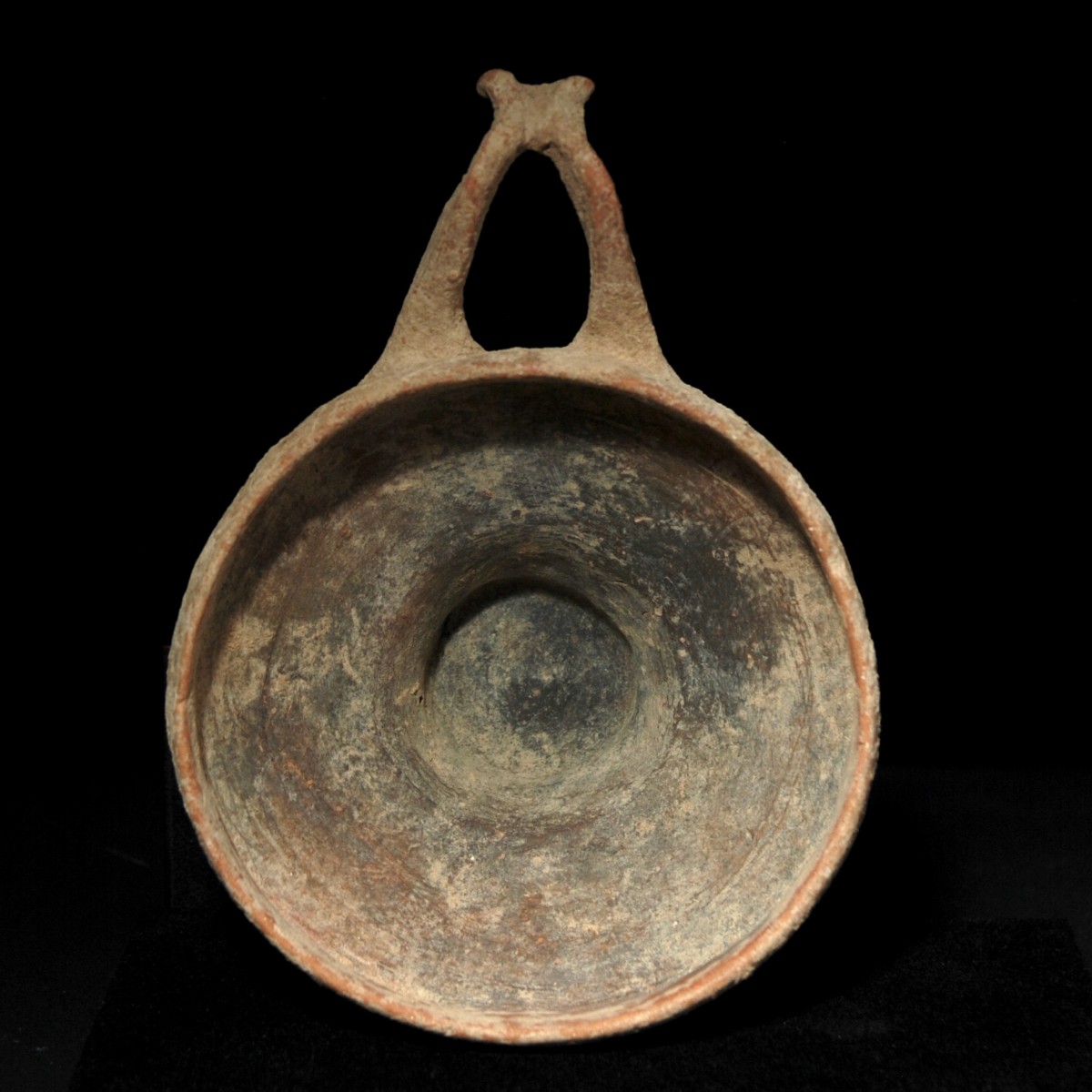
|
Funnel-shaped bowl of red-brown clay with a flat, slightly inward wall. The high ring foot slightly tapering towards the bottom, the base concave. Striking is the wishbone handle. Both arms of the handle flaring upwards before turning inwards until meeting downwards with a slightly zest. Due to their use bowls such as the present one are also called milk bowls. Compare the type with the bowl in the British Museum with museum number 1896,0201.363.
|
Provenance: Private collection Professor Dr. Rudolf Leopold (1925-2010), Vienna. Austria. Thence in the family estate.
Dimensions: 16 cm long
Price: 400 Euro
|
|
|
|
|
|
Besuchen Sie unsere Ausstellung
"Die ewige Schönheit Ägyptens"
|
SAVE THE DATE. Und es gibt noch eine gute Nachricht: Im Sommer findet erstmals nach einem Jahr wieder eine bedeutende Kunstmesse in Österreich statt. Die ART&ANTIQUE in der Salzburger Residenz öffnet am 7. August wieder ihre Pforten. Wir freuen uns bereits jetzt auf ein Wiedersehen bei den Salzburger Festspielen!
|
|
|
|
Unser Highlight des Monats:
|
|
Etrurien – 5. Jahrhundert v. Chr.
|
Prachtvolle Vollbronze-Statuette eines etruskischen Kriegers. Er steht mit dem linken Bein leicht nach vorne versetzt und hält den rechten Arm nach oben, in der Hand eine kurze Lanze. Der linke Arm ist leicht vom Körper abgesetzt und hält die Reste einer weiteren Waffe, wohl eines Schilds. Der Krieger trägt einen phrygischen Helm mit aufgestellten Wangenklappen. Das dichte Haar kreist sein Gesicht ein und fällt hinten lange und fein in den Nacken. Das Gesicht mit großen, mandelförmigen Augen, langer Nase und einem zarten Lächeln. Über dem Mund ein fein gezogener Schnauzbart. Er trägt eine kurze Tunika mit an der Schulter gesäumten Rändern, darüber einen Brustpanzer. Das Untergewand wirft vorne feine Falten, das Genital lässt es jedoch ebenso frei wie sein Gesäß. Die Unterschenkel schützen Beinschienen. Unter den Füßen sind noch die Zapfen erhalten, mit denen die Statuette in ihre antike Basis gesteckt wurde. Vergleiche eine ähnliche Statuette bei Christie’s New York am 10. Juni 2010, Los 124.
|
Provenienz: Englische Privatsammlung 1980er Jahre.
Höhe: 17,8 cm mit Zapfen
Price: 24.000 Euro
|
|
|
|
Ausgewählte Kunstwerke des Monats:
|
|
Ägypten – Mittleres Reich, 12. Dynastie, 1991-1802 v. Chr.
|
Fragment einer Alabasterstele vom Tempel des Osiris in Abydos. Das in den Stein geritzte Relief zeigt oben zwei sorgfältig gearbeitete Zeilen mit Hieroglyphen. Sie nennen die Opferformel und den Namen des Besitzers, des „Hausherren Ameny“. In der Opferformel wird „Osiris, der große Gott, der Herr von Abydos“ gebeten, dem Spender der Stele „ein Totenopfer“ zu bringen, „an Brot und Bier, Fleisch und Geflügel, Leinen und Alabaster und allen guten und reinen Dingen, von denen ein Gott leben kann, für den Ka des Ameny“. So wie Osiris in Abydos beigesetzt war, wollten es auch diejenigen sein, die an eine Überwindung des Todes durch Osiris glaubten. Seit dem ausgehenden Alten Reich wird das Leben und das Sterben des Osiris, vor allem aber seine Auferstehung zur Hoffnung auf die Überwindung des Todes für jeden Einzelnen. So versuchten Privatleute zunehmend, in unmittelbarer Weise an der Bedeutung von Abydos und der Heiligkeit des Ortes teilzuhaben. Sie ließen sich in der Nekropole bestatten oder Kenotaphe errichten, kleinere Kapellen, in denen Stelen für die ganze Familie aufgestellt sein konnten. In dieser Stele sehen wir den „Herren des Hauses“ Ameny auf einem Löwenbeinhocker mit kurzer Lehne. Er hält die Arme mit der flachen Hand vom Körper weggestreckt. Vor ihm steht der Speisetisch mit Rund- und Spitzbroten, Gans und Rinderschinken. Gesockelt.
|
Provenienz: Belgische Privatsammlung Tom Desmet, erworben am 26. Juni 1967 bei Dumoulins et Meulemans in Brüssel. Danach bei Galerie Moderne Brüssel am 13. Mai 2015. Mit Provenienzbestätigung der Galerie Moderne vom 4. Dezember 2020. Zuletzt in einer englischen Sammlung.
Dimensionen: 30,5 cm x 31 cm
Preis: 18.000 Euro
|
|
|
|
|
Römisches Reich – 2. Jahrhundert n. Chr.
|
Große Stele aus Kalkstein mit der plastischen Büste einer Frau in der heraus geschlagenen Nische. Die Frau, deren Name am unteren Rand mit Saturnilla angegeben wird, blickt mit weit geöffneten Augen aus dicken Lidern zum Betrachter. Die Pupillen sind gelocht. Sie hält in der linken Hand wohl Schriftrollen, mit der rechten zieht sie ihren Schleier zusammen. Die Haare sind sorgfältig gewellt und mittig gescheitelt. Saturnilla trägt auffällige Ohrringe und ein Gewand, das an der linken Schulter verschnürt ist. Die Darstellung der Verstorbenen sowie der weiche Kalkstein machen deutlich, dass die Stele aus dem nördlichen Syrien, möglicherweise aus Zeugma in der heutigen Osttürkei stammt. Mit Übersetzung und Beschreibung der Wiener Epigraphikerin Katharina Michner BA MA.
|
Provenienz: Privatsammlung Jany Gabriel Parise, erworben vor 1984. Mit einer Expertise von Jean Roudillon vom 16. April 1984. Mit französischem Antikenpass.
Dimesnonen: 62,5 cm x 46 cm
Preis: 18.000 Euro
|
|
|
|
|
Assyrisches Reich – 8. Jahrhundert v. Chr.
|
Aus Steatit gearbeitete Libationsschale mit einem Löwenkopf am Rand. Der Löwenkopf mit runder Öffnung am Maul, aus dem das Trankopfer in die Schale floss. Die Augen des Tieres sind tief gelocht und trugen einst Einlagen aus einem Schmuckstein. Das Fell des Löwen in mehreren Lagen fein in den Stein geschnitten, rund um das Maul ebenfalls Fellgravuren. Der Körper des Löwen geht hinten in eine sich verengende Öffnung über, die einst mit einem großen Gefäß verbunden war. Von dort wurde das Trankopfer extrahiert und in der Löwenschale aufgefangen. Die Unterseite der Schale mit zwei konzentrischen Kreisen. Trankopferschalen wie diese wurden im neuassyrischen Großreich vor allem in Nordsyrien gefertigt. Vergleiche zum Typus Muscarella (Herausgeber) „Ladders to Heaven, Art Treasures from Lands oft the Bible“, Nummer 235. Gesockelt.
|
Provenienz: Alte englische Privatsammlung. Danach Bonhams London vom 7. Oktober 1997, Los 258. Zuletzt in einer New Yorker Sammlung.
Länge: 17,5 cm
Preis: 8.000 Euro
|
|
|
|
|
Ägypten – Spätzeit, 664-332 v. Chr.
|
Große hölzerne Sarkophagmaske mit reicher Bemalung. Das verhältnismäßig kleine und wohl weibliche Gesicht mit weißer Grundierung, schwarz gezogenen Lidern und großen schwarzen Pupillen. Die Brauen darüber ebenfalls in schwarzer Farbe aufgetragen. Mund und Nase plastisch wiedergegeben. Die große dreiteilige Perücke in Blau, Rot und Weiß dekoriert. Die Schultern, Perückenlappen und der Brustschmuck mit blauen, roten, gelben sowie weißen Bändern mit senkrechten schwarzen Strichen dekoriert. Auf der Stirn ein schwarz aufgemalter Skarabäus, der eine rote Sonnenscheibe hält. Auf einem schwarzen Holzbrett zur Montage an der Wand aufgebracht.
|
Provenienz: Privatsammlung D, Paris. Erworben von den Eltern des heutigen Besitzers in den 1980er Jahren.
Dimensionen: 56 cm x 50 cm
Preis: 12.000 Euro
|
|
|
|
|
Kykladische Inseln – Frühkykladisch I, 3000-2900 v. Chr.
|
Sehr große marmorne Steinvase aus der Frühzeit der kykladischen Kultur mit halbkugelförmigem Korpus und vier durchbohrten Ösenrippen. Etwa in der Mitte des dünnwandigen, lichtdurchlassenden Korpus ein Knick, an den der zylindrische Hals ansetzt. Das schwere Gefäß steht auf einem schlanken hohen Fuß, der sich nach unten verbreitert. Die Bewohner der Kykladen verarbeiteten in der frühen Bronzezeit den weißen Marmor ihrer Inseln zu den bekannten Idolen und zu diesen Steinvasen, deren Figur einzigartig geblieben ist. Die genaue Funktion der „Kandilas“ (sie sind nach den hängenden Lampen in griechischen Kirchen benannt, an die sie erinnern sollen) ist bis heute ein Rätsel. Fest steht nur, dass ihre Herstellung einen enormen Arbeitsaufwand in Anspruch nahm. Der Marmorblock wurde nämlich nicht etwa mit Metallwerkzeugen, sondern mit Stein, Bein und Holzwerkzeugen ausgehöhlt.
|
Provenienz: Aus dem Bestand der gerichtlich aufgelösten Pariser Galerie La Reine Margot. Dort mit der Inventarnummer 9694 gelistet.
Höhe: 16,6 cm
Preis: 8.000 Euro
|
|
|
|
|
Ägypten – Spätzeit, 664-332 v. Chr.
|
Hölzernes Panel, das vom Sarkophag einer Frau namens Neset-iret-bint stammt. Die dreispaltige vertikale Hieroglyphen-Inschrift wird von rechts oben nach unten gelesen. Die Übersetzung lautet: „Oh Osiris, die Verklärte (die Verstorbene), Neset-iret-bint, Tochter des Wer-diu, Leiter der Sitze, Priester des Thot …“ Die Schriftreste in der dritten Spalte weisen auf eine so genannte „Gliedervergottung“ hin. Dabei werden Körperteile mit einer Gottheit in Verbindung gebracht. Mit wunderbar erhaltenen, roten und weißen Farbresten. Das Fragment stammt wohl aus Hermopolis oder Tuna el-Gebel, da der Vater der Verstorbenen als Priester des Thot bezeichnet wird. Auf einer schwarz lackierten Holzplatte zur Montage an der Wand aufgebracht.
|
Provenienz: Privatsammlung D, Paris. Erworben von den Eltern des heutigen Besitzers in den 1980er Jahren.
Dimensionen: 62,2 cm x 17,6 cm
Preis: 8.000 Euro
|
|
|
|
|
Süditalien – 5. Jahrhundert v. Chr.
|
Wunderbar erhaltener Askos in der Form eines stilisierten Vogels. Der Ausguss vorne den Kopf symbolisierend ist hoch aufgerichtet mit horizontalem, leicht nach unten gewölbtem Rand. Hinten abstehend eine runde, beckenförmige Öffnung, die den Schwanz darstellt. Kleine Lochungen im Korpus sieben die Flüssigkeit und sorgen dafür, dass sie nur langsam in das Becken tropften. Der Bandhenkel in der Form eines stilisierten Stierkopfes mit Hörnern und einem zentralen Auge. Die geometrische Malerei in Rot und Schwarz mit Dreiecken, Bändern, Kreisen und Punkten umfasst das gesamte Gefäß und ist großteils erhalten.
|
Provenienz: Edward H. Merrin Gallery, New York 1970er Jahre. Dort erworben von einer New Yorker Privatsammlung.
Dimensionen: 16.2 cm x 17.4 cm
Preis: 2.200 Euro
|
|
|
|
|
Mitteleuropa – 13. Jahrhundert v. Chr.
|
Ein Paar Armbergen aus eckigem Bronzedraht. Das eine Ende des Drahtes läuft in einem abstehenden Reif mit spitzem Ende aus, das andere in eine große, fein gedrehte Spirale mit sechs Windungen und Mittelknopf. Dieser so genannte Tutulus ist separat gearbeitet und über eine Querverstrebung in der Spirale fixiert. Bronzeschmuck wie dieser wurde am Oberarm getragen und diente gleichzeitig als Schutzwaffe.
|
Provenienz: Privatsammlung Professor Dr. Rudolf Leopold (1925-2010), Wien. Danach weiterhin im Besitz der Familie.
Dimensionen: 14 cm bzw. 15,7 cm
Price: 1.400 Euro
|
|
|
|
|
Mitteleuropa – um 1300 v. Chr.
|
Außerordentlich lange Gewandnadel aus gegossener Bronze, die typisch für Funde aus der Urnenfelderzeit ist. Die Nadel mit langem, geradem Schaft sowie geschwollenem Hals mit waagrechten Rillenbändern. Der Kopf zwiebelförmig, oben und unten umlaufende, dazwischen diagonale Rillen.
|
Provenienz: Deutsche Privatsammlung, erworben in den 1970er bis 1980er Jahren.
Länge: 60 cm
Preis: 900 Euro
|
|
|
|
|
Römisches Reich – 132-134 n. Chr.
|
Silber-Denar des Kaisers Hadrian in seltener Ausführung mit Porträt nach links am Avers und Text Hadrianus Augustus. Am Revers die sitzende Indulgentia ebenfalls nach links, ihre rechte Hand ausgestreckt, in der linken hält sie ihr Zepter. Umlaufend Text „INDULGENTIA AUG PP COS III“. Prachtvolles Porträt des Kaisers im hohem Relief.
|
Provenienz: Sammlung Schwarz, Graz.
Dimensionen: Durchmesser 1,8 cm; Gewicht 3,5 Gramm.
Preis: 700 Euro
|
|
|
|
|
Zypern – 1450-1100 v. Chr.
|
Trichterförmige Schale aus rotbraunem Ton mit flacher, leicht nach innen gewölbter Wandung. Der hohe Ringfuß verjüngt sich leicht nach unten, die Basis konkav. Auffällig ist der dreieckige Gabelhenkel („Wishbone Handle“). Die beiden Arme des Henkels schwingen nach oben, ehe sie sich nach innen drehen und mit einem leichten Schwung nach unten aufeinandertreffen. Schalen wie diese werden ihrer Verwendung entsprechend auch Milchschalen genannt. Vergleiche zum Typus die Schale im British Museum mit der Museumsnummer 1896,0201.363.
|
Provenienz: Privatsammlung Professor Dr. Rudolf Leopold (1925-2010), Wien. Danach weiterhin im Besitz der Familie.
Länge: 16 cm
Preis: 400 Euro
|
|
|
|
|
|
|
CHRISTOPH BACHER ARCHÄOLOGIE ANCIENT ART GmbH
|
Galerie: Stubenring 20, A-1010 Wien
Showroom: Untere Viaduktgasse 55, A-1030 Wien
|
|
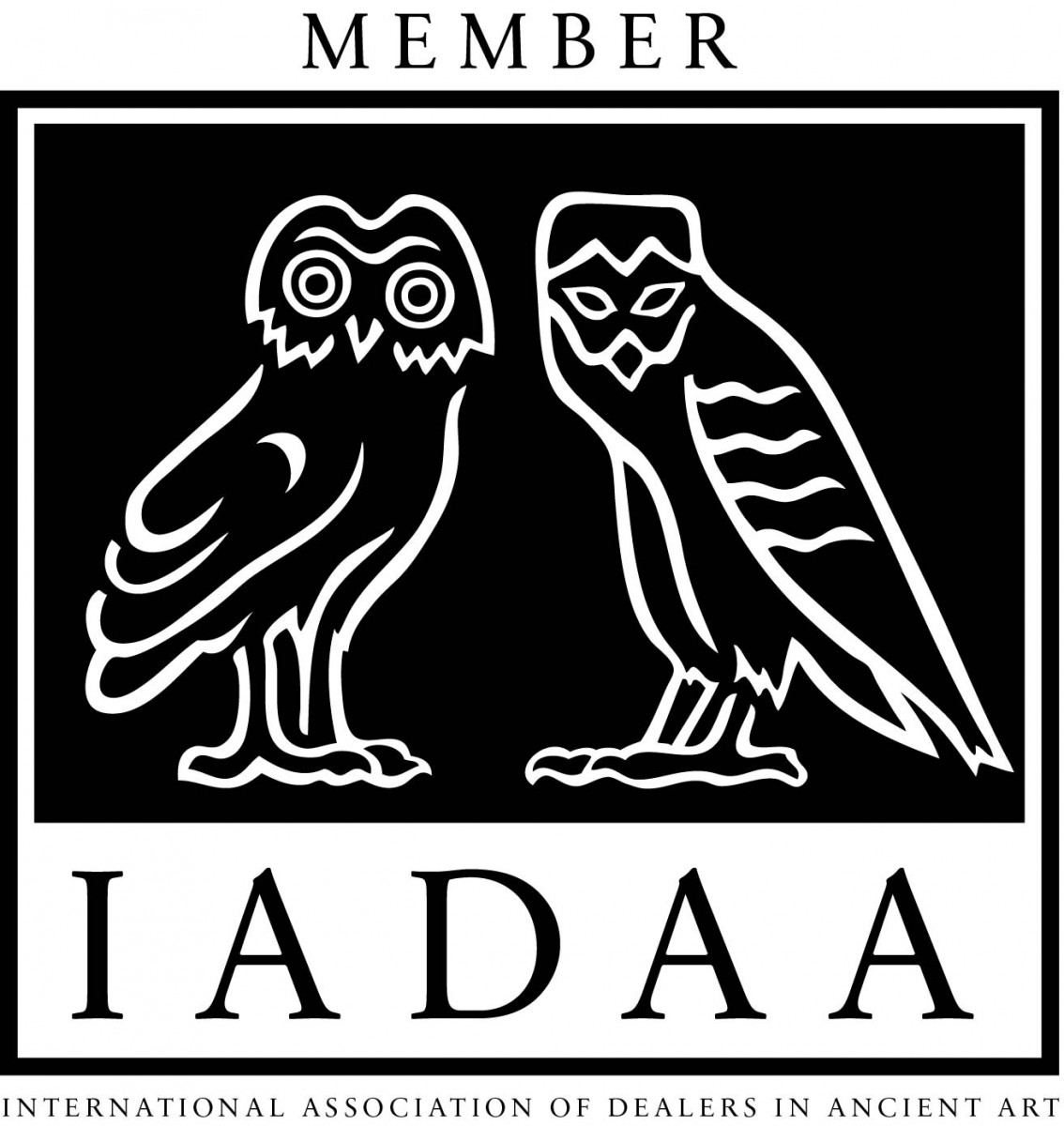
|
|
|
|